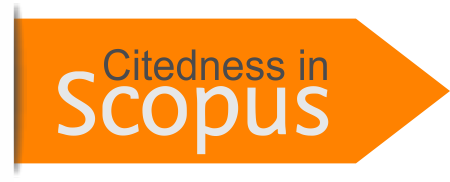The Influence of Operating Cash Flow, Net Income, Depreciation Expenses, and Amortization Expenses on Cash Flow Forecasting at PT. Bank XYZ
Abstract
The cash flow statement is part of a company's financial statements produced in an accounting period that shows the company's cash inflows and outflows. This study aims to analyze the effect of operating cash flow variables, net income, depreciation expense, and amortization expense on forecasting future cash flows. This research uses quantitative research using secondary data with a descriptive approach, which is analyzed using the Multiple Linear Regression method with SPSS assistance. The object used is PT. Bank XYZ for the period January 2019 to February 2023. The results show that operating cash flow affects forecasting future cash flows, net profit does not affect forecasting future cash flows, depreciation expense does not affect forecasting future cash flows, and amortization expense does not affect forecasting future cash flows. However, operating cash flow, net profit, depreciation expense, and amortization expense simultaneously affect the cash flow forecasting results. Based on the forecasting results, which have a MAPE value of 17.43%, it can be concluded that the forecasting results have good forecasting abilities.
Keywords
Full Text:
PDFReferences
Afrizela, N., Afrizal, dan Kusumastuti, R. (2020) ‘Pengaruh kemampuan informasi laba, free cash flow, beban depresiasi, dan rasio perputaran piutang dalam memprediksi arus kas di masa depan (studi empiris pada perusahaan real estate dan property yang terdaftar di BEI periode 2015-2018)’, Jambi Accounting Review (JAR), 1(3), pp. 260–284.
Audina, B., Fatekurohman, M., dan Riski, A. (2021) ‘Peramalan arus kas dengan pendekatan time series menggunakan support vector machine’, Indonesian Journal of Applied Statistics, 4(1), pp. 34–43.
Cerniati dan Hasan, W.A. (2019) ‘Pengaruh laba kotor, laba operasi, dan laba bersih dalam memprediksi arus kas di masa mendatang studi kasus pada perusahaan LQ 45 yang terdaftar di BEI’, Jurnal Ilmiah Mahasiswa Fakultas Ekonomi UMButon, 2, pp. 204–222.
Kaloh, T., Ilat, V. dan Pangerapan, S. (2018) ‘Analisis laporan arus kas untuk menilai kinerja keuangan perusahaan makanan dan minuman yang terdaftar di Bursa Efek Indonesia’, Jurnal Riset Akuntansi, 14(1), pp. 741–751. doi:10.32400/gc.13.04.21872.2018.
Maharani, Y. (2020) ‘Model prediksi arus kas di masa depan (studi empiris pada perusahaan telekomunikasi yang terdaftar di BEI)’, Jurnal Ilmu Sosial, Manajemen, Akuntansi dan Bisnis, 1(1), pp. 1–13.
Pangestu, M. (2020) ‘Analisis kemampuan informasi laba dan arus kas dalam memprediksi arus kas masa depan’, Berkala Akuntansi dan Keuangan Indonesia, 5(2), p. 132. doi:10.20473/baki.v5i2.21400.
Soleha, A.A., Gurendrawati, E. dan Armeliza, D. (2020) Prediksi arus kas masa mendatang melalui laba bersih dan komponen akrual’. Skripsi. Jakarta: Fakultas Ekonomi Universitas Negeri Jakarta.
Susanti, S. dan Elen, T. (2021) ‘Faktor-faktor yang mempengaruhi prediksi arus kas masa depan pada perusahaan manufaktur sektor konsumsi’, Jurnal Akuntansi, Keuangan, Pajak Dan Informasi (JAKPI), 1(1), pp. 45–62.
DOI: https://doi.org/10.46336/ijqrm.v4i3.496
Refbacks
- There are currently no refbacks.
Copyright (c) 2023 Aisyah Nurul Aini, Herlina Napitupulu, Sukono Sukono

This work is licensed under a Creative Commons Attribution 4.0 International License.
Published By:
IJQRM: Jalan Riung Ampuh No. 3, Riung Bandung, Kota Bandung 40295, Jawa Barat, Indonesia
IJQRM Indexed By:
 Creation is distributed below Lisensi Creative Commons Atribusi 4.0 Internasional.
Creation is distributed below Lisensi Creative Commons Atribusi 4.0 Internasional.








